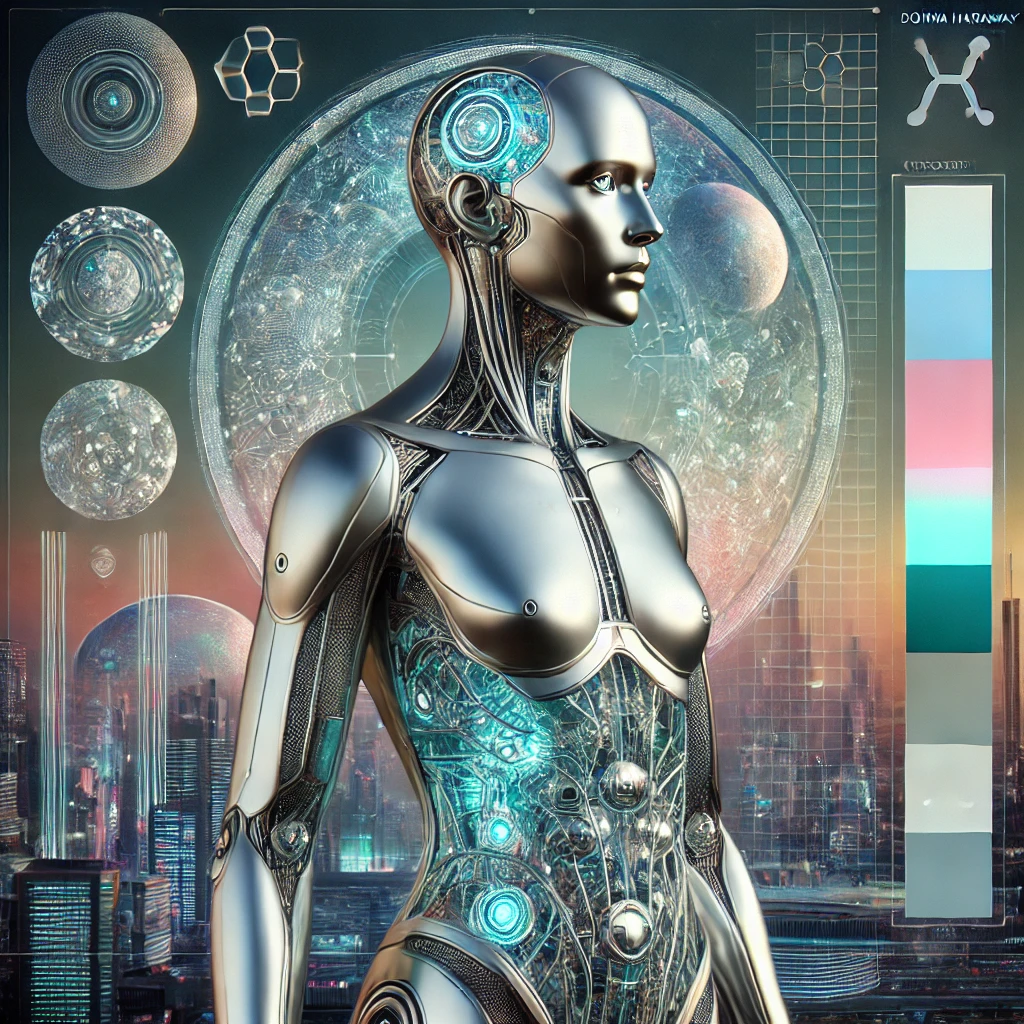Donna Haraway’s Cyborg Manifesto envisions a world where rigid boundaries—human versus machine, male versus female—are dismantled in favor of fluid, hybrid identities. This concept finds a striking parallel in Janelle Monáe’s Dirty Computer, which critiques societal norms by celebrating non-conformity, queerness, and individuality. Both works address the oppressive forces that constrain identity, offering pathways to liberation through hybridity and resistance.
Haraway’s cyborg, a metaphor for transcending binaries, finds new life in Monáe’s futuristic, dystopian narrative. In Dirty Computer, Monáe portrays herself as a “dirty computer”—a being targeted for erasure because of her refusal to conform. Through songs like “Make Me Feel,” Monáe rejects fixed labels, celebrating fluidity in sexuality and identity. Similarly, Haraway asserts that identity need not adhere to traditional binaries; instead, it thrives in intersections and multiplicities. Monáe’s defiance echoes this sentiment, blending elements of Black culture, queerness, and technological imagery to challenge norms that attempt to limit human expression.
This interplay between identity and oppression has deep roots in the works of Black authors like Octavia Butler, whose novels such as Kindred and Parable of the Sower explore how race, gender, and power intersect in dystopian settings. Butler’s exploration of adaptable, fluid identities aligns with Haraway’s vision of the cyborg. For example, Butler’s protagonists often survive by rejecting societal expectations and reshaping their identities to fit new, often hostile realities. These themes resonate in Monáe’s work, as she uses the lens of technology and queerness to critique structures that oppress marginalized communities.
In the context of America, where gender identity continues to spark political and cultural debates, works like Dirty Computer are vital. They confront the erasure of queer, non-binary, and Black identities and experiences, emphasizing the importance of a firmness in one’s self and building self intimacy in a society eager to impose categories and judgement. Monáe and Haraway, like Butler, advocate for a world where identities are not confined but celebrated in their complexity—a vision both radical and profoundly human.
Their combined artistic efforts created contemporary resistance, offering a blueprint for embracing intersectionality in the fight for acceptance in humanity.

